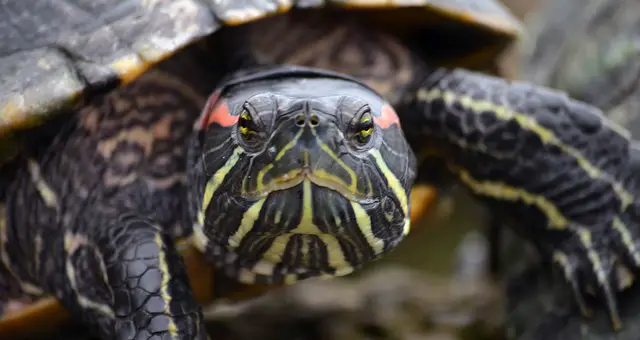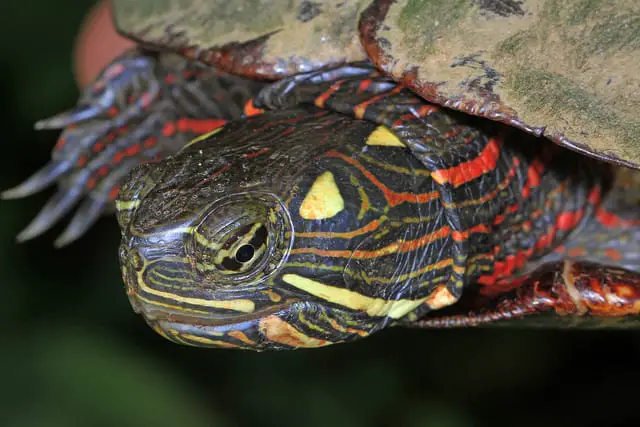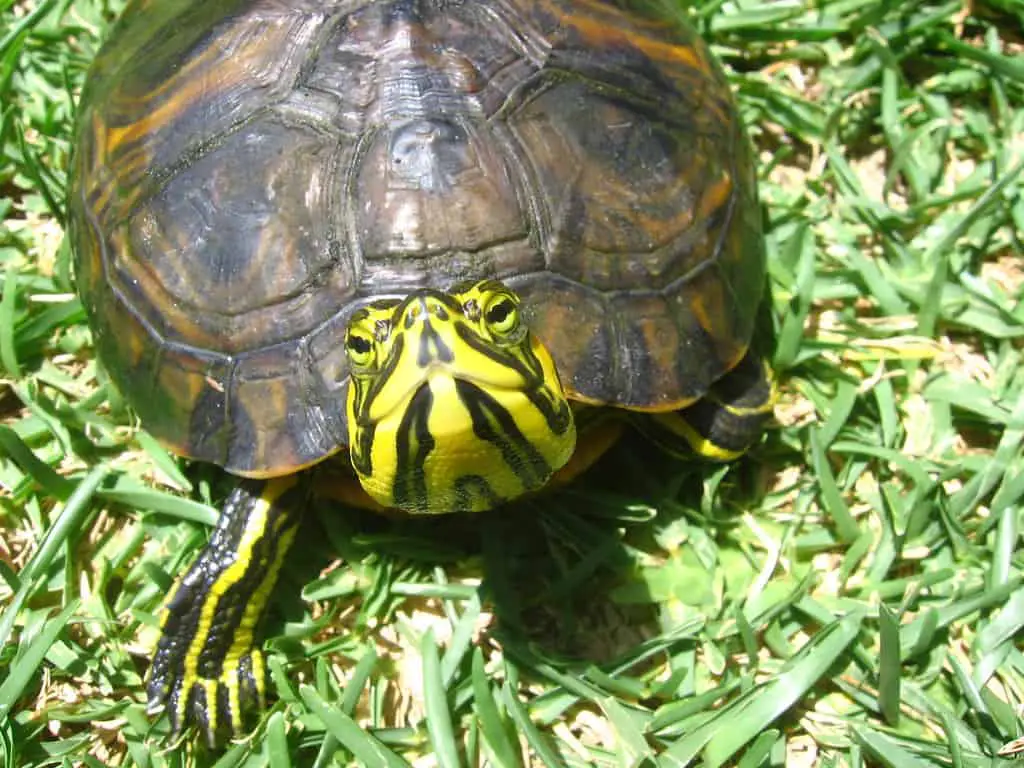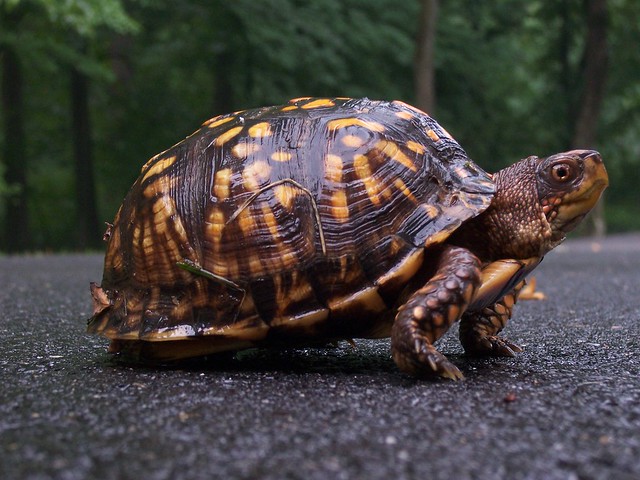Table of Contents
So you think you want to adopt a turtle? That’s great, but you need to be aware, though they may seem to be very low-maintenance, the opposite is true. But, chances are, you already know that, so, let’s answer your question: “how can I adopt a turtle?”
There are a lot of ways to adopt a turtle. Free adoption, adopting a turtle at a pet store or purchasing a turtle through a vendor (they could be very sick, or a turtle from the wild).
Like any animal that needs a forever home, there are pros and cons to turtle adoption. A lot of research should go into adopting a pet turtle. They have different needs than that of a dog or cat, or a lizard or snake, for that matter. For starters, you need to decide on what kind of turtle you want to adopt.
The Red-eared Slider, Box Turtle, and the Painted Turtle are popular breeds. Each has different requirements of care, type of food they should eat, and what goes into making a habitat for them to be comfortable as they grow.
What’s the Difference Between a Turtle and a Tortoise?
First, let’s get this common question out of the way. In the U.S., we refer to all chelonians (turtles, tortoises, and terrapins) as “turtles.” In the U.K., “turtles” live in the sea, “tortoises” live on land, and “terrapins” live in fresh or brackish water.
Turtles are Long-Lived
We’ve all gone to the zoo more times than we can count. The reptile house is among the most popular with kids and adults alike. We are fascinated with the giant Galapagos Tortoise, the smaller turtles and more. That’s when some kids get the idea they want to adopt a pet turtle. They’re small and cute, and very appealing.
Too often, parents will go out and adopt a turtle without doing a lick of research. According to the Turtle Rescue League, “many people get a turtle as a pet without understanding the full care requirements.” Turtles have an amazingly long lifespan, especially if well taken care of. Therein lies a problem: Your pet turtle may outlive you. They also have very specific requirements for their habitats. Your average pet turtle can live anywhere from 60-100 years, possibly more with exemplary care.
It takes a very high level of responsibility to take on the care of a living creature so long-lived. Smaller children may see them as toys, feed them a couple times, then forget them instead of taking care of them. Some turtles can become neglected and eventually die. Parents need to be aware that they are taking on the care of the turtle for life, too.
Commonly Adopted Types of Turtles
The most common types of turtle for adoption are the Box Turtle and the Red-eared Slider. Box Turtles are a favorite among those looking to adopt a pet turtle. They’re about four to seven inches in diameter and are quite manageable for pet owners. They need lots of space to move, or you can take them outside for some exercise.
Image: Box Turtle on the Trail, CC BY-SA 2.0, Ron Alford via Flickr
According to TetraFauna, “Box Turtles love their meat, eating a variety of insects, earthworms, snails, and such.” Like humans, these adopted turtles also need their fruits and veggies to get any necessary vitamins they don’t get from pellets. Greens, apples, and berries are great treats!

- Red Eared Slider: CC by 2.0 by Jazminator via Flickr
Red-eared Sliders, with a red-orange stripe on either side of their head, are avid swimmers and can reach seven to 12 inches in diameter. They need a place to sunbathe, and especially like to do that with other turtles in groups. Since they’re semi-aquatic, they need no less than four inches of water to zip around in and to hunt fish. These turtles are ecstatic when they are hunting fast fish in enough water to really maneuver.
The Red-Eared Slider vs. the Painted Turtle

While they closely resemble Red Eared Sliders, Painted Turtles are a beautifully “painted” yellow and red turtle. They’re one of the most common turtles in North America. Not from the states? You can also adopt these turtles in Canada and Mexico. They’re also aquatic like the Red-eared Slider and like tanks filled with water so they can swim about. Young Painted Turtles require a protein-based diet; older turtles need a more vegetarian diet. “Because turtles need calcium to remain healthy, Tetrafauna ReptoMin® food provides high nutritional value and is vitamin and calcium enriched.”
When it comes to differences, there are fewer of them than similarities between the two. They are actually great tank mates, but the Painted Turtle females are about half the size of the Red-eared sliders. Make sure you pay attention to how they get along and have a place to separate them if necessary.
Turtle Care: Habitat
Have you thought about how you’re going to contain your newly adopted turtle? Or how big it might get? Some will only get as big as your hand while others will be big enough to take on the pet dog. Some turtles live on land, others live in water.
Box Turtles:
- They love space! When you adopt a Box Turtle you want to make sure that they have space to move around. If you want an active turtle, one Box Turtle needs a 36” X 12” enclosure!
- What you’ll need: a large plastic storage container or reptile aquarium, peat-based potting soil (something easy and soft to burrow in). If you can’t get that cypress mulch is a great second choice.
- Your Box Turtle is also going to need foliage, a flat surface for a feeding area, a water dish with water to soak in, but shallow so it doesn’t drown.
- You’re also going to need “a heat lamp over one end of the pen will help her thermoregulate (control her body temperature)”
Red-eared Sliders:
The care of Red-eared Sliders and painted turtles is so similar that they actually make good tank mates. Both this section and the below Painted Turtle section can apply, in general, for both breeds.
- Red-eared Sliders are semi-aquatic turtles. They need a lot of space to swim around. These turtles also love places that are warm – and out of the water – so they can soak up all the sunlight. For your Slider to live a long life, you’re going to need a great set up.
- Semi-aquatic means that they need plenty of room to swim, and a place to get out of the water. At a minimum, the water should be at least 1.5 to 2 times as deep as your turtle is long (so a 4-inch turtle should have a minimum depth of 6 inches).” There are more instructions for great turtle homes in the following section.
- A good filtration system is needed as these turtles are messy. It will reduce how much water you’re changing, but you’re still going to need to change it weekly and clean the tank monthly.
- Smooth rocks are great for their basking area, or a “turtle dock” so they have an area to lay on that is completely out of the water. Red-eared sliders may eat the rocks, so you can chose to go without them and use a “turtle dock” for them to bask.
- Finally, a good heat source; “The ambient air in the tank should be around 75-80 degrees Fahrenheit (24-27 degrees Celsius), with a basking spot at 90-95 degrees Fahrenheit (32-35 degrees Celsius).”
- You’ll also need UVA/UVB light so that they can get their calcium and “sunlight.”
Painted Turtles:
The care of Painted Turtles and Red-eared sliders is so similar that they actually make good tank mates. Both this section and the above Red-eared slider section can apply, in general, for both types of turtle.
- Painted Turtles need tanks that resemble their natural habitats, most animals thrive in a vivarium suited to them. You’re going to want a lot of room for your Painted Turtles, with a tank that has a screened lid on top.
- What you’ll need: A 20-30 gallon tank with a screened lid. Gravel should fill the bottom at one end of the tank for their basking area. “Make two slopes to create an additional shallow area if your tank is long enough.” Fill with water up to the beach area, deep enough so they can swim around.
- Driftwood or a flat rock can be placed on the beach so it overhangs the water. This creates a shallow cave, like in a natural body of water, and increases the amount of swimming space while also increasing the basking area.
- A UVB light should be hung over the deep end of the water, while a heating lamp should be hung over the basking area.
- Finally, decide on a feeding area for your turtle. “Feeding tanks are optional, but they help keep the main tank cleaner.”
- Mist your habitat one to two times a day so that the proper humidity will be obtained.
Veterinary Care
Don’t forget, like any pet, turtles need vet visits as well. As with all “exotics” (a catch-all phrase for pets that aren’t cats and dogs), these visits can get expensive. If not fed properly, tanks not cleaned or maintaining clean water, vet visits will be a must. These can become expensive. Don’t forget that turtles carry salmonella, so you need to take extra care when it comes to hygiene, especially with children. The most common vet visit is going to be because of vitamin deficiency, as well as calcium deficiency.
Turtle Care: Diet
After adopting a turtle you’re going to need to feed your new friend. But what do you get? There are commercial pellets made for your turtle that give them the bare minimum dietary requirements. Those shouldn’t be their main diet. You can give them a live treat such as mealworms, night crawlers, their favorite: minnows (not goldfish), or even crickets. Basically, they must have live prey gives the little guys something to hunt. As noted by VetStreet, “Turtles have a high requirement for vitamin A in their diets as they do not store this vitamin in their bodies.”
However, if you’re squeamish, these amphibious hunters might not be for you. Some people think you can put food in their tank and then just forget them. Turtles need mroe than that and require dedication for decades in many cases.
Children and the Decision to Adopt a Turtle
Turtles are great for children aged eight or older. It gives them a sense of responsibility for their first pet, and for future pets as well. They’re able to learn about reptiles in a safe environment, without fear of being injured. Unless they try to kiss the turtle, then bets are off. Turtles tend to bite.
However, any child younger than that tends to scare turtles. Young children have a tendency to drop things, which could result in injury to the adopted turtle or tortoise. They’ll also forget to feed them or forget about them all together. So think about the age of your child when going to adopt a pet turtle.
Once the child is older-if the turtle has lived just as long- they’re going to go off to college, or move out of their parent’s house. Who is going to be taking care of the turtle? It’s going to become the responsibility of the parents, sibling or eventually given up.
Wild vs. Pet Store and Rescue Turtles
There aren’t very many difference between adopting a turtle vs the ones in the wild. Though, the ones you see wandering through your yard or in the road need to stay in the wild. They’re most likely females carrying eggs to the site they’re going to lay their eggs. Also, pet store turtles carry diseases that are not normally found in the wild. Please do not release your adopted turtle into the wild, you could be giving wild turtles something they’ve never had and disturb the ecosystem in the process. Another thing to keep in mind when adopting a turtle; if you purchase a female, they don’t necessarily need a male to lay eggs.
There should be a lot of consideration into adopting a pet turtle or tortoise. Do the research before going out and actually adopting one. Take into account the age of your children, where the new pet’s home is going to be, how big it’s going to get, vet expenses, etc. Do not take turtles from the wild, nor release unwanted turtles into the wild. Look into turtles for free adoption, or turtle adoption in general. But always do your research before going out to adopt a turtle.
[amazon bestseller=”turtle habitat kit” items=”5″]
Featured image: CC BY-SA 2.0 by Daniel Lombraña González via Flickr



